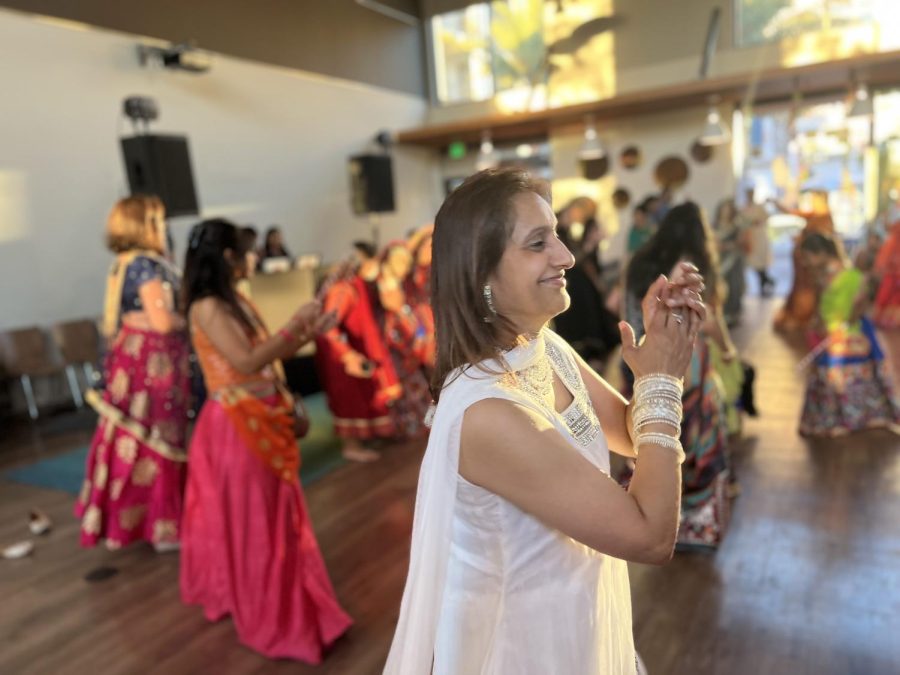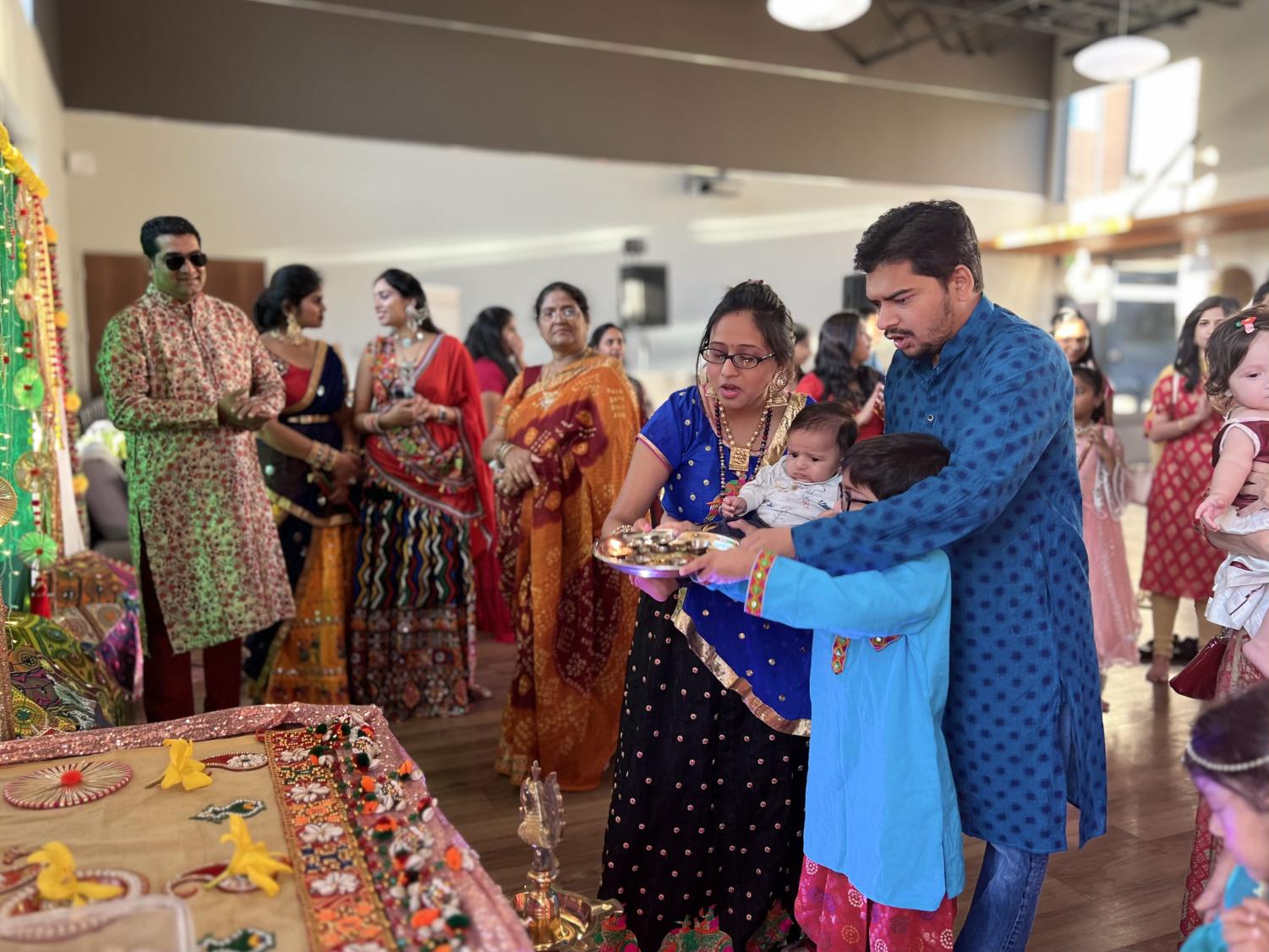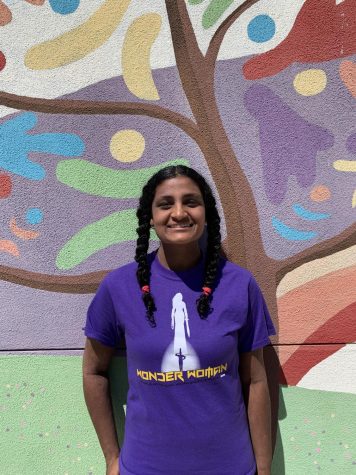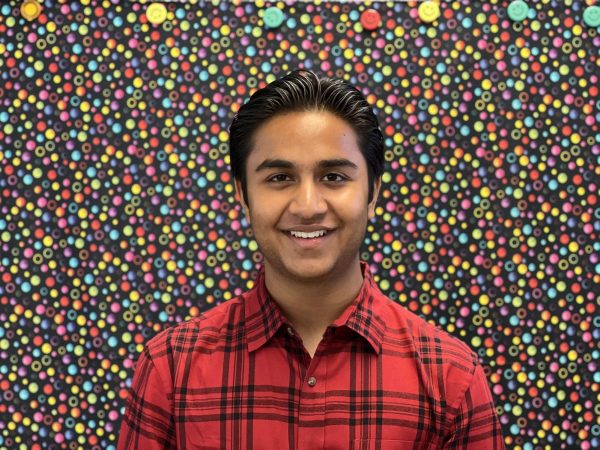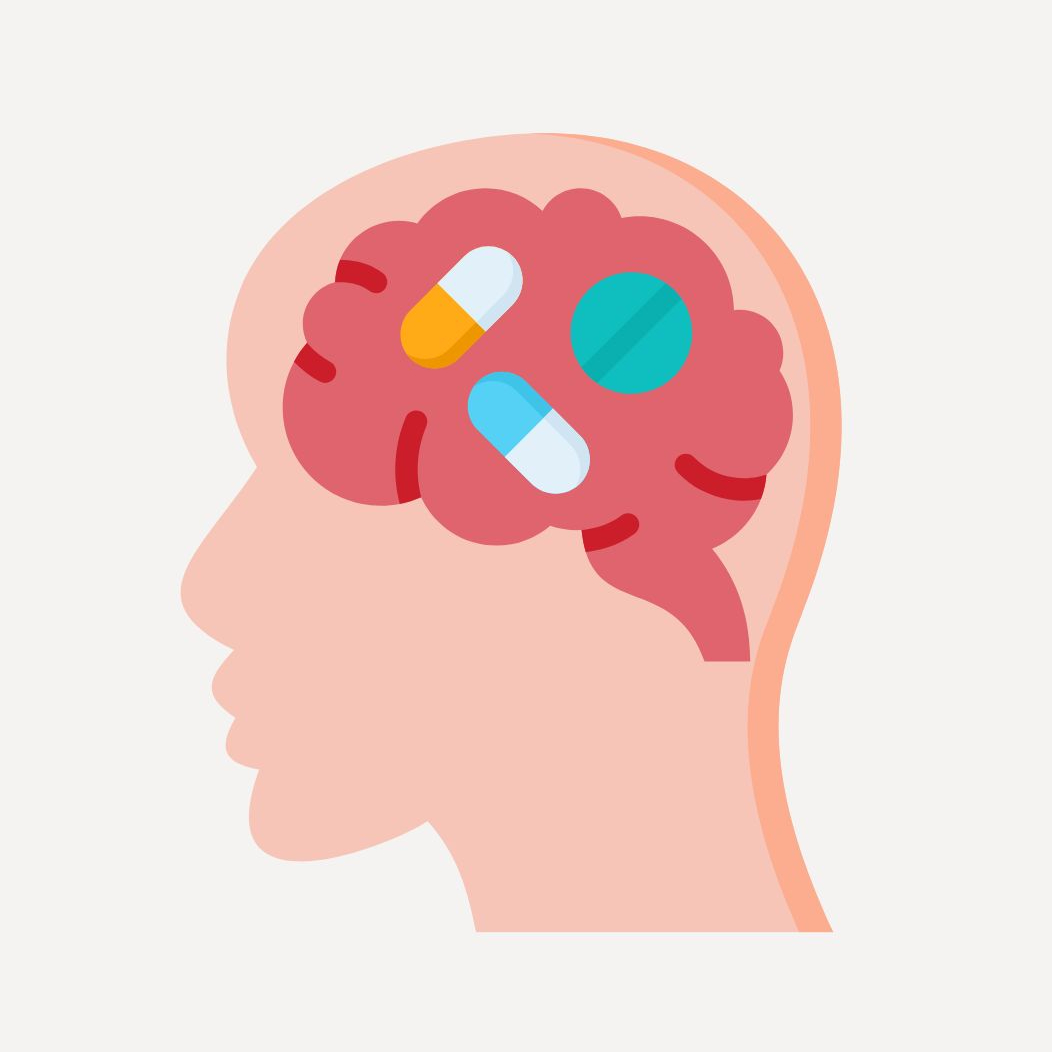Indian communities around the world celebrate Navratri
Outfits worn for garba and dandiya tend to be extremely vibrant and colorful in order to stand out and create a bright environment full of joy.
October 10, 2022
From Sept. 26 to Oct. 5, Hindus around the world celebrated Navratri, a nine day festival about the victory of good over evil. With a rich history, different regions celebrate in unique ways.
Navratri is about the demon Mahishasura using his immortality to terrorize the Earth, not believing that a woman would kill him. Then, Lord Brahma, Lord Vishnu and Lord Shiva – the three most powerful Hindu gods – decided to come together and create Durga, a powerful goddess. The fight between Mahishasura and Durga lasted ten days, with Durga being victorious.
“I think it’s a really interesting story and it celebrates women in India, shakti [energy], and recognizes that women have power and that’s really cool,” said Sowmya Venkatesh (‘25).
During Navratri, devotees worship the nine avatars of the Goddess Durga, each day representing a different incarnate. Many individuals fast, chant prayers, wear new clothes, and clean their homes during this time, celebrating not just Durga but other goddesses as well.
“We present books for the Saraswati Puja [prayer] because she is the goddess of knowledge. We make food offerings and give them to family and friends as well, and visit a lot of their houses to do Pujas and also just talk and have fun,” said Ritwik Aeka (‘26).
Traditional folk dancing, namely Garba and Dandiya, are also integral to Navratri celebrations, especially in the Indian state of Gujarat. Garba is ethnic dance where dancers clap and move in a circle, while Dandiya involves dancing with special sticks to popular tunes.
“Garba is a great way to strengthen your friendships with other Indian people and get closer to Indian culture. It is a time to dance, have a lot of fun, and wear really cool attire like Ghagras. It’s really a great way to celebrate,” said Bhavya Yanamandra (‘23).
Originating from the Mughal era in the fifth century, Ghagras are long, loose skirts worn with blouses (cholis). In addition to Ghagras, Sarees, Chaniya Cholis, and other traditional attire is worn with detailed workings of beads, sequins, and fancy stitches. Men, on the other hand, put on extravagant kurta tops and kediyus to dance the night away with friends, family, and loved ones.
“Ghagras are super pretty and I feel really connected with my culture and my ancestors when I wear them. The skirt feels super nice and fun to dance with,” said Ishita Kottakota (‘24).
The tenth day of Navratri, Dussehra, represents the end of negativity and evil within. On this day, colorful fireworks light up the sky and clay idols of Durga and other gods get immersed in water as a matter of farewell. The day of Dussehra represents a new, fresh beginning.
“Navratri brings me a lot of joy. Being in America is great and we’re incredibly lucky to be here, but it can feel suffocating as someone who comes from a different country. Festivals like Navratri remind me of home, and connect me to my Indian roots,” said Pleasanton Resident Savitha Mishra.

